Vadim Markovtsev
Identifying collaborators in large codebases
May 07, 2019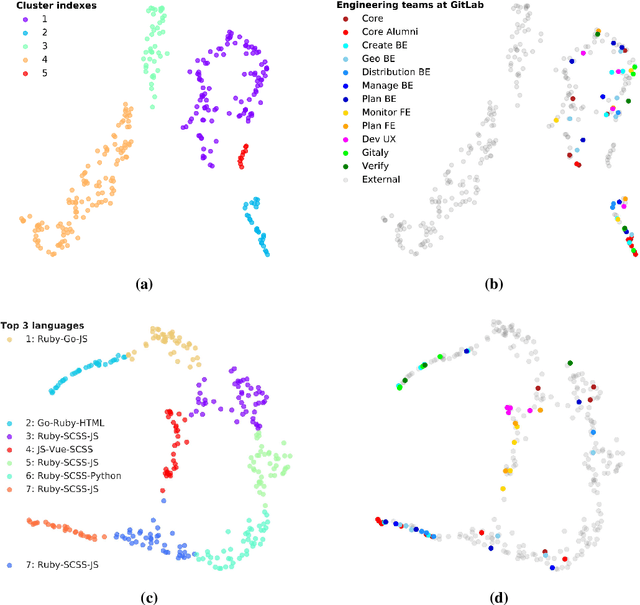

Abstract:The way developers collaborate inside and particularly across teams often escapes management's attention, despite a formal organization with designated teams being defined. Observability of the actual, organically formed engineering structure provides decision makers invaluable additional tools to manage their talent pool. To identify existing inter and intra-team interactions - and suggest relevant opportunities for suitable collaborations - this paper studies contributors' commit activity, usage of programming languages, and code identifier topics by embedding and clustering them. We evaluate our findings collaborating with the GitLab organization, analyzing 117 of their open source projects. We show that we are able to restore their engineering organization in broad strokes, and also reveal hidden coding collaborations as well as justify in-house technical decisions.
STYLE-ANALYZER: fixing code style inconsistencies with interpretable unsupervised algorithms
Apr 01, 2019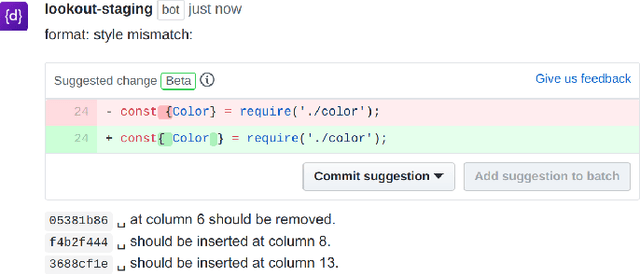
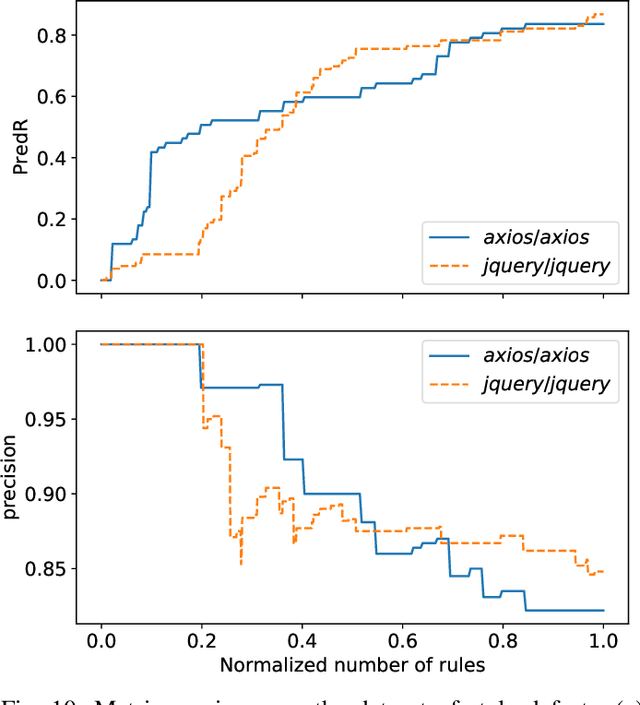
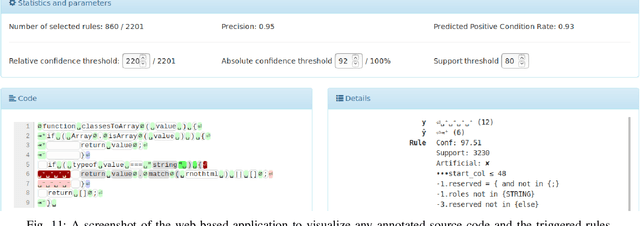

Abstract:Source code reviews are manual, time-consuming, and expensive. Human involvement should be focused on analyzing the most relevant aspects of the program, such as logic and maintainability, rather than amending style, syntax, or formatting defects. Some tools with linting capabilities can format code automatically and report various stylistic violations for supported programming languages. They are based on rules written by domain experts, hence, their configuration is often tedious, and it is impractical for the given set of rules to cover all possible corner cases. Some machine learning-based solutions exist, but they remain uninterpretable black boxes. This paper introduces STYLE-ANALYZER, a new open source tool to automatically fix code formatting violations using the decision tree forest model which adapts to each codebase and is fully unsupervised. STYLE-ANALYZER is built on top of our novel assisted code review framework, Lookout. It accurately mines the formatting style of each analyzed Git repository and expresses the found format patterns with compact human-readable rules. STYLE-ANALYZER can then suggest style inconsistency fixes in the form of code review comments. We evaluate the output quality and practical relevance of STYLE-ANALYZER by demonstrating that it can reproduce the original style with high precision, measured on 19 popular JavaScript projects, and by showing that it yields promising results in fixing real style mistakes. STYLE-ANALYZER includes a web application to visualize how the rules are triggered. We release STYLE-ANALYZER as a reusable and extendable open source software package on GitHub for the benefit of the community.
Splitting source code identifiers using Bidirectional LSTM Recurrent Neural Network
Jul 19, 2018
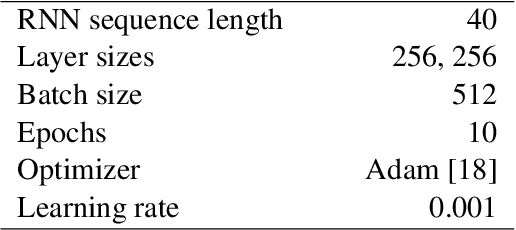
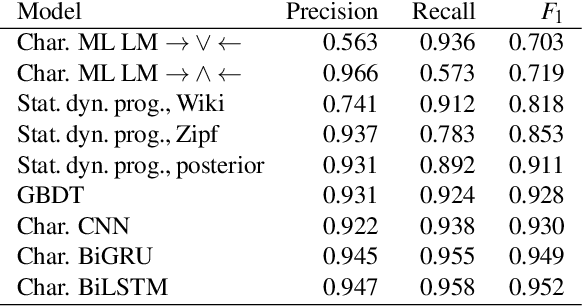

Abstract:Programmers make rich use of natural language in the source code they write through identifiers and comments. Source code identifiers are selected from a pool of tokens which are strongly related to the meaning, naming conventions, and context. These tokens are often combined to produce more precise and obvious designations. Such multi-part identifiers count for 97% of all naming tokens in the Public Git Archive - the largest dataset of Git repositories to date. We introduce a bidirectional LSTM recurrent neural network to detect subtokens in source code identifiers. We trained that network on 41.7 million distinct splittable identifiers collected from 182,014 open source projects in Public Git Archive, and show that it outperforms several other machine learning models. The proposed network can be used to improve the upstream models which are based on source code identifiers, as well as improving developer experience allowing writing code without switching the keyboard case.
Topic modeling of public repositories at scale using names in source code
May 20, 2017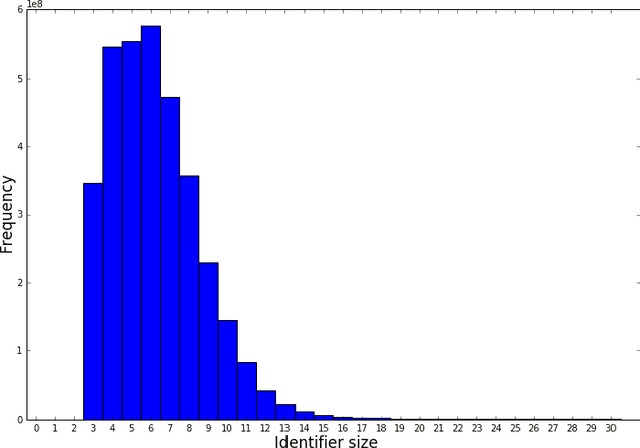
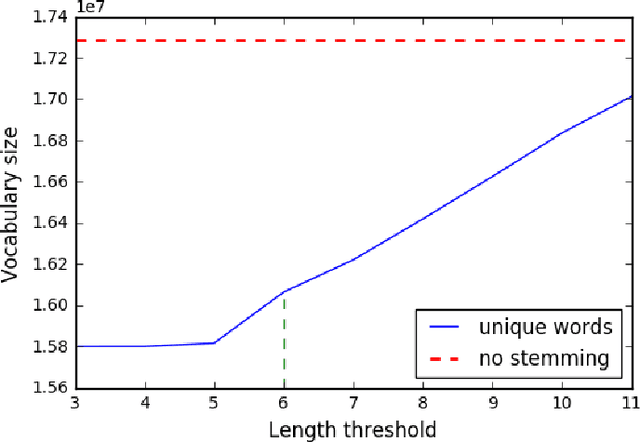
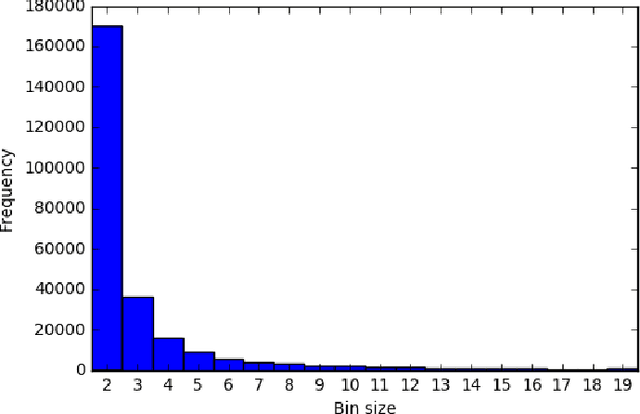
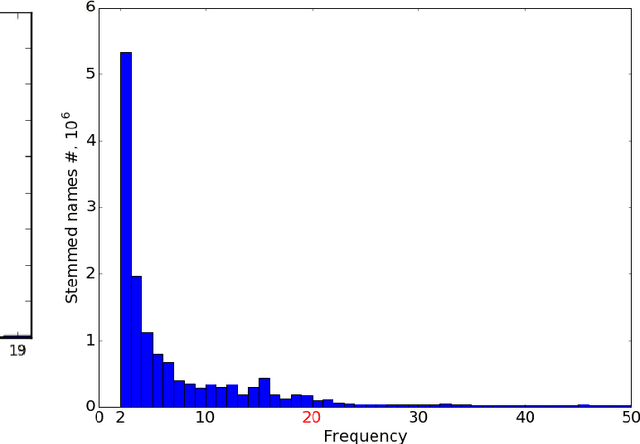
Abstract:Programming languages themselves have a limited number of reserved keywords and character based tokens that define the language specification. However, programmers have a rich use of natural language within their code through comments, text literals and naming entities. The programmer defined names that can be found in source code are a rich source of information to build a high level understanding of the project. The goal of this paper is to apply topic modeling to names used in over 13.6 million repositories and perceive the inferred topics. One of the problems in such a study is the occurrence of duplicate repositories not officially marked as forks (obscure forks). We show how to address it using the same identifiers which are extracted for topic modeling. We open with a discussion on naming in source code, we then elaborate on our approach to remove exact duplicate and fuzzy duplicate repositories using Locality Sensitive Hashing on the bag-of-words model and then discuss our work on topic modeling; and finally present the results from our data analysis together with open-access to the source code, tools and datasets.
 Add to Chrome
Add to Chrome Add to Firefox
Add to Firefox Add to Edge
Add to Edge